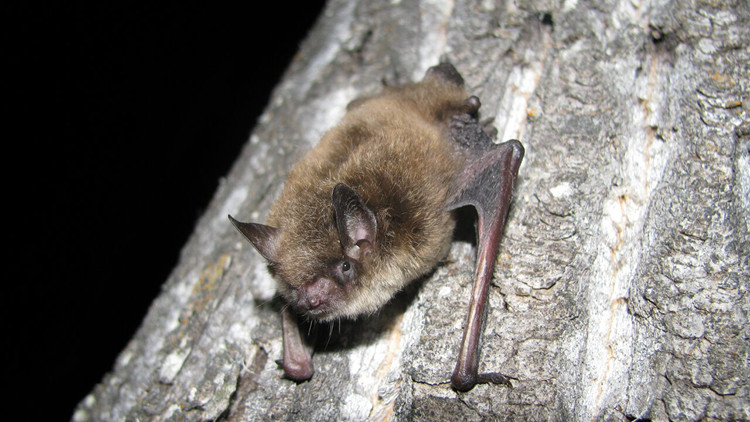Government mail service may be affected by the Canada Post labour disruption. Learn about how critical government mail will be handled.
Overview
Bats are an important part of Alberta’s ecosystem and provide economic and social benefits to Albertans.
All bats in Alberta eat insects, including forest and farm pests and mosquitos. Bats support pollination and seed dispersal of many native and agricultural plants. Bat droppings are a natural fertilizer.

Species in Alberta
There are at least 9 different species of bats found in Alberta. Six bat species reside in Alberta year-round and hibernate during the cold winter months.
- Big Brown Bat
- Little Brown Myotis (Little Brown Bat)
- Long-eared Myotis
- Long-legged Myotis
- Northern Myotis
- Western Small-footed Myotis
Three bat species are migratory, returning to Alberta each spring to rear their young, and leaving each fall to overwinter in the southern United States or Mexico.
- Eastern Red Bat
- Hoary Bat
- Silver-haired Bat (this species occasionally overwinters in Alberta)
All of Alberta’s bats are protected under the Wildlife Act.
Learn what to do if you find a bat.
Challenges
White-nose Syndrome is a disease that affects bats and is caused by a fungus that grows in caves where bats hibernate. The disease has devastated bat populations in much of North America; millions of bats have died.
When the fungus gets on the skin of a bat, it can irritate the bat causing early arousal from hibernation at a time when insect prey are not available, so bats starve to death.
The fungus that causes the disease was detected in Alberta in 2022. In May 2024, White-nose Syndrome was found on 3 little brown myotis bats in Southeastern Alberta.
Now that the fungus and disease have been detected in Alberta, they are expected to spread among Alberta’s hibernating bat populations. White-nose Syndrome does not affect other animals or people.
Learn more about White-nose Syndrome.
Monitoring bat populations
Alberta is participating in a North American bat monitoring program. This program was initiated because of the declines in bat populations in eastern North America due to White-nose Syndrome.
Most of the monitoring is done with acoustic detectors that record the calls of bats when they are flying at night. We are also trying to locate and monitor 2 important kinds of bat roosts:
- caves where bats hibernate
- maternity roosts (where females have their young every year, often in buildings)
Contact us if you know of a hibernation site or maternity colony.
Learn more about the North American Bat Monitoring Program.
Recovery planning
Recovery planning is underway to support bat populations that are susceptible to White-nose Syndrome, including little brown myotis and northern myotis bats.
Recovery strategies include:
- monitoring and minimizing the spread of the fungus and White-nose Syndrome
- surveying and monitoring bats to track changes in population trends and distribution
- protecting bat habitat, including known sites where bats hibernate over the winter (hibernacula), maternal roosts, and areas used for foraging, drinking, connectivity and roost sites for males and non-reproductive females
- identifying, reducing and mitigating bat mortalities caused by human activity and promoting bat conservation
- evaluating and implementing mitigation to reduce the impacts of White-nose Syndrome
Watch the video on Alberta’s first probiotic trial to protect bats from White-nose syndrome.
Learn about the Little Brown Myotis and Northern Myotis Bat Recovery Plan engagement
Alberta Community Bat Program
Alberta's government partners with the Alberta Community Bat Program (Wildlife Conservation Society Canada) to:
- provide information about Alberta bat species and their habitats
- provide ways to support bat conservation
- help people manage bats in buildings
- collect data to monitor Alberta's bat populations
- collect data to monitor the spread of the fungus and White-nose Syndrome
- work with citizen scientists to report on and monitor bat roosts
Learn more about the Alberta Community Bat Program.
Alberta Bat Action Team
The Alberta Bat Action Team works to improve bat conservation and management in Alberta for resident and migratory species.